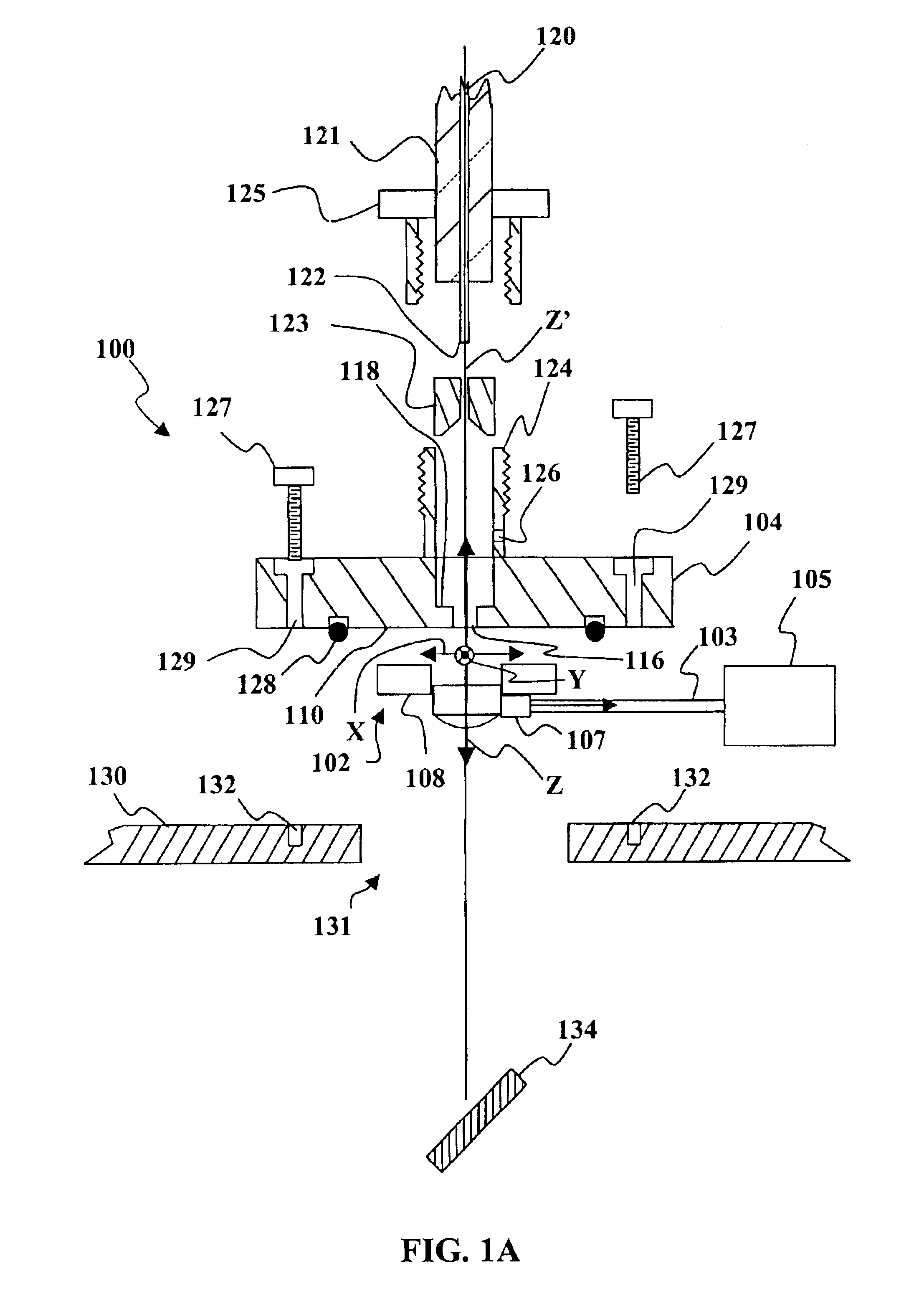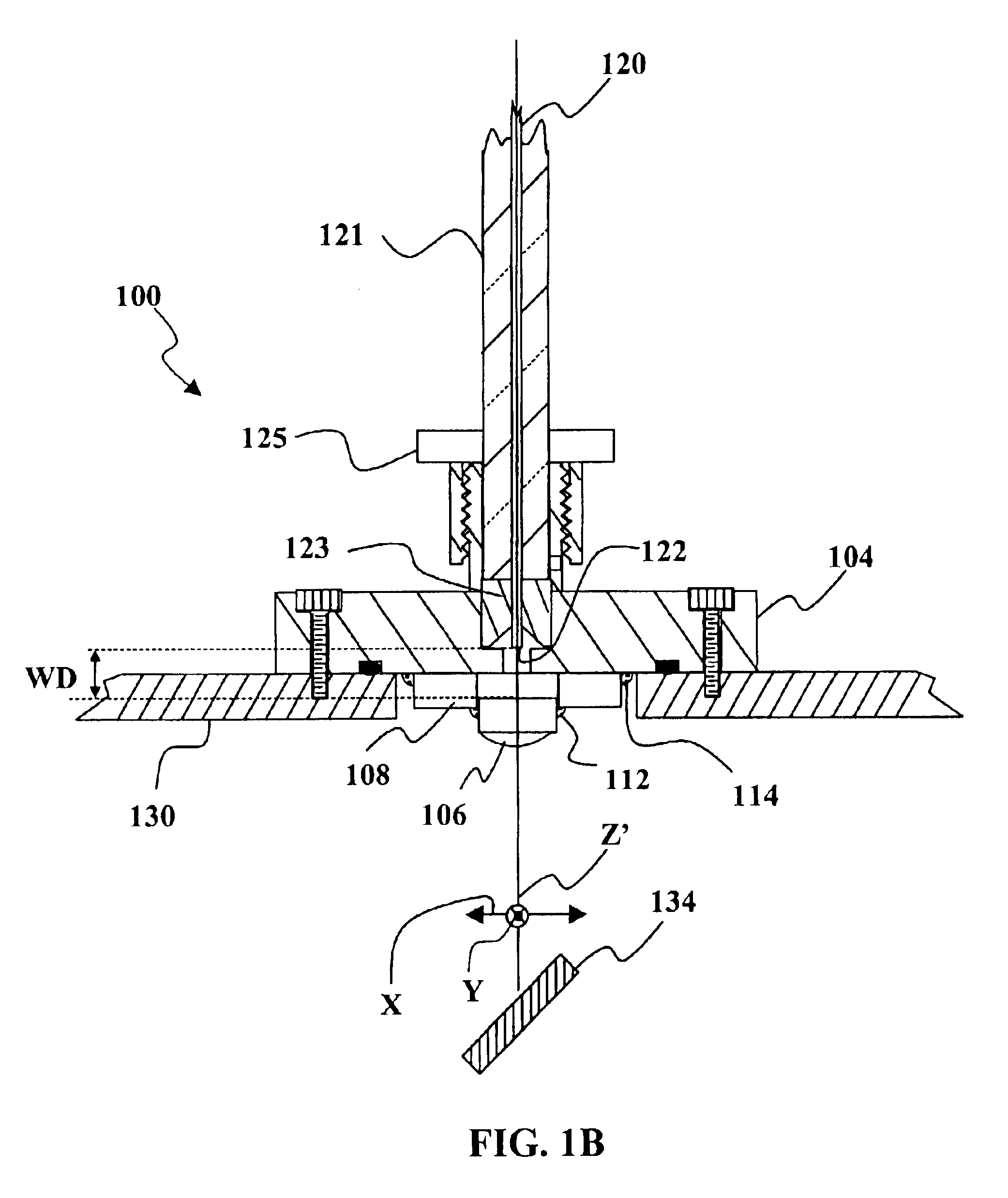Aligning a lens with respect to an axis of beam propagation
a beam propagation and aligning technology, applied in the field of optics, can solve the problems of difficult strain relief of fiber from the mounting system, less than ideal applications such as fiber coupled lasers, and inability to remove fiber, so as to achieve precise optical alignment of collimating fiber bulkhead connectors, eliminate contamination worries, and improve the effect of optical alignmen
- Summary
- Abstract
- Description
- Claims
- Application Information
AI Technical Summary
Benefits of technology
Problems solved by technology
Method used
Image
Examples
Embodiment Construction
[0031]Although the following detailed description contains many specific details for the purposes of illustration, anyone of ordinary skill in the art will appreciate that many variations and alterations to the following details are within the scope of the invention. In the mathematical derivations described below certain assumptions have been made for the sake of clarity. These assumptions should not be construed as limitations on the invention. Accordingly, the exemplary embodiments of the invention described below are set forth without any loss of generality to, and without imposing limitations upon, the claimed invention.
[0032]FIGS. 1A-1B depict an example of an apparatus 100 for aligning a lens with respect to a beam propagation axis. The apparatus includes a mount 102 and a bulkhead connector 104. The mount 102 and bulkhead connector 104 are configured to align an optic axis of the lens Z with the axis of beam propagation Z′. The axis of beam propagation Z′ may define a prefer...
PUM
 Login to View More
Login to View More Abstract
Description
Claims
Application Information
 Login to View More
Login to View More - R&D
- Intellectual Property
- Life Sciences
- Materials
- Tech Scout
- Unparalleled Data Quality
- Higher Quality Content
- 60% Fewer Hallucinations
Browse by: Latest US Patents, China's latest patents, Technical Efficacy Thesaurus, Application Domain, Technology Topic, Popular Technical Reports.
© 2025 PatSnap. All rights reserved.Legal|Privacy policy|Modern Slavery Act Transparency Statement|Sitemap|About US| Contact US: help@patsnap.com



